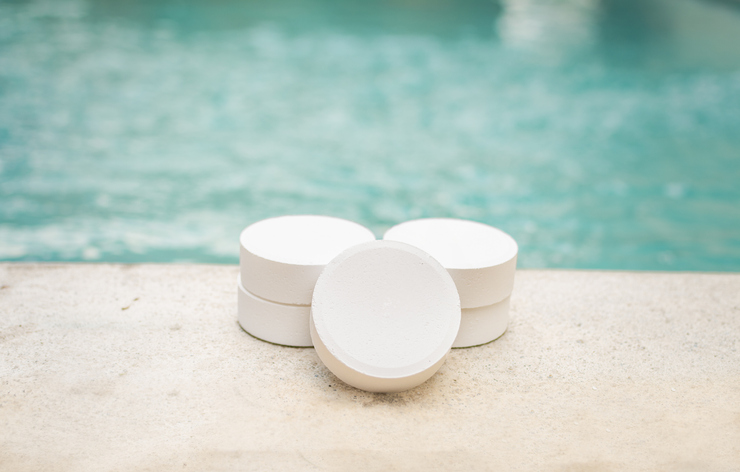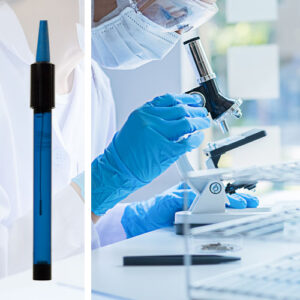Free and total chlorine measurements are important when determining the effectiveness of water treatment efforts. This is because they provide insight into the interaction between chlorine and contaminants, as well as help in delivering the right chlorine dosage. In this article, we review what free chlorine and total chlorine are, their sensors and their importance in algae bloom prevention.
What is Free Chlorine?
Free chlorine in a water body refers to the amount of chlorine available to eliminate harmful microbes and neutralize contaminants. Generally, it is a hypochlorous acid or hypochlorite ion and effectively kills bacteria, viruses, and other harmful microorganisms. Measuring free chlorine levels is a critical part of any water disinfection process that involves the use of chlorine. Measurements are typically in parts per million (ppm).
What is Total Chlorine?
Understanding the difference between total chlorine and free chlorine requires a brief review of the water disinfection process using chlorine. After introducing chlorine into water, it forms a hypochlorous acid or hypochlorite ion, which kills disease-causing microbes. Chlorine also combines with contaminants to form chloramines, otherwise known as combined chlorine. The sum of combined chlorine and free chlorine is what is referred to as total chlorine.
During water treatment, it is desirable to have a greater proportion of the total chlorine as free chlorine rather than combined chlorine. This is because of the odor associated with chloramines, especially when they are in excess of 0.5 ppm. Generally, as chloramines are formed, they leave the water body via off-gassing. However, in setups such as a swimming pool, they could build up over time and require a shock treatment. A shock treatment entails introducing oxidants, which remove electrons from chloramines, thereby destroying them. Some common shock chemicals include calcium hypochlorite (cal-hypo), stabilized chlorine (di-chlor), and potassium monopersulfate (non-chlorine/oxidizer). After applying this treatment to a pool, it is advisable to wait between four to six hours before resuming swimming. Except in the case of potassium monopersulfate, which dissolves quickly, it requires just a 15-minute wait.
Free Chlorine vs Total Chlorine Sensors
Generally, free chlorine and total chlorine sensors deploy similar technologies to detect chlorine levels. Some of these include amperometric, colorimetric, and DPD (N, N-diethyl-p-phenylenediamine) methods. Both types of sensors offer high accuracy and real-time monitoring, but the right choice depends on your application.
For instance, free chlorine sensors are ideal for applications involving active disinfection, such as swimming pool disinfection, as well as drinking and industrial water treatment. Values between 2 and 4 ppm are recommended, but this requirement can vary depending on the amount and type of contaminants. Excess chlorine in drinking water can result in nausea, vomiting, and irritation of the throat and stomach. While in swimming pools, it can result in damage to the skin and eyes. So, it is necessary to maintain tight control of free chlorine values over time. The effectiveness of the free chlorine is also dependent on other values, such as pH and exposure to sunlight. This is why modern free chlorine sensors can measure other parameters like pH and conductivity.
On the other hand, total chlorine sensors measure both free and combined chlorine levels in water. This is not sufficient for active disinfection but offers a cheaper way of monitoring chlorine. Applications such as wastewater treatment, cooling water systems, and aquaculture typically monitor this parameter.
Whatever your needs may be, Alpha offers you a variety of solutions from our In-Line Chlorine Sensor Portfolio.
Importance of Chlorine in Algae Bloom Prevention
Algae growth is a common challenge in water treatment setups, especially when the water is exposed to the environment, like swimming pools and cooling towers. This is because algae spores can enter through various means, such as wind, rain, or contaminated equipment. In addition, algae growth is quite rapid, with its population doubling in about 3 to 8 hours, leading to visible blooms. Contrary to public opinion, too much chlorine does not promote algae growth. However, to be efficient with resources, a monitoring program using free chlorine and total chlorine sensors is required. The key to implementing a successful algae prevention program entails maintaining proper water chemistry at all times, which involves several factors.
Chlorine Levels
Maintaining a sufficient amount of free chlorine is necessary for effective sanitization and algae prevention. Free chlorine measurements guide the chlorine dosage, while total chlorine measurements reveal when shock treatments are necessary to limit the amount of combined chlorine in the water. This is why the combination of free chlorine and total chlorine sensors is often necessary. Although WHO recommends between 0.5 to 1 ppm of chlorine for general disinfection, high bacterial content can cause this to go up significantly.
pH Balance
The hypochlorous acid (HOCl) and hypochlorite ion (OCl–) components of free chlorine are both effective disinfectants. However, HOCl can be between 30 to 300 times more effective than OCl– depending on conditions and microorganisms present. The pH of water is what determines which of these two components is predominant. When pH is 7.2, HOCl is about 65% of the free chlorine. While at higher pH levels of 7.5 and 7.8, HOCl is about 48% and 32% respectively. So, it is necessary to also monitor pH levels when implementing a chlorine disinfection process.
Cyanuric Acid
Without cyanuric acid (CYA), chlorine will break down in a few hours when under direct sunlight. So, it is common to utilize CYA as a stabilizer for chlorine in swimming pools. However, having too much CYA is also a problem as chlorine combines with it to form chlorinated isocyanurates. This makes chlorine about 150 times less potent, which is why the US CDC limits CYA use to 15 ppm.
Filtration and Circulation
Proper filtration and circulation is necessary to remove debris, bacteria, and algae spores from the water. In the summer, it is recommended that pools should filter at least 6 to 8 hours per day. Also, filtration and circulation are vital after heavy swimmer loads.




